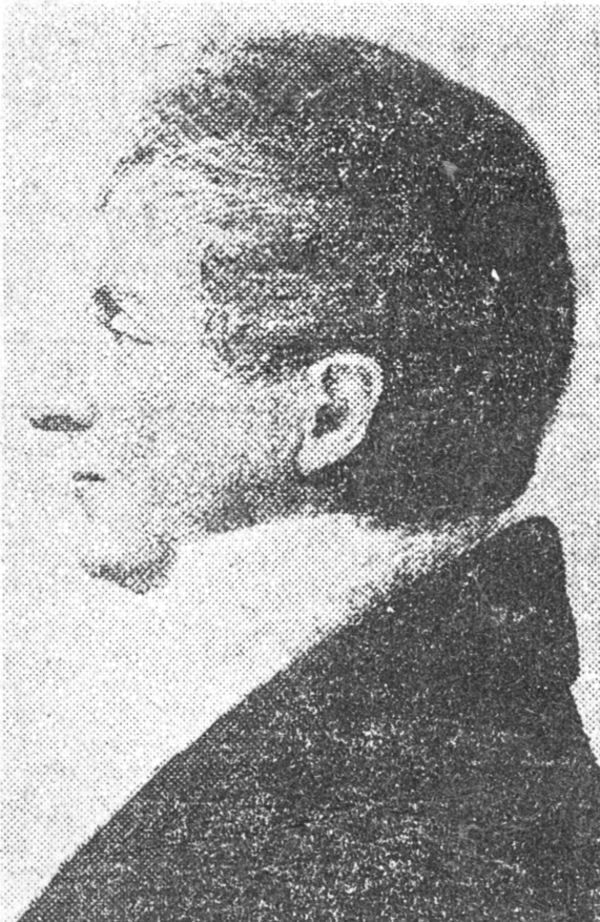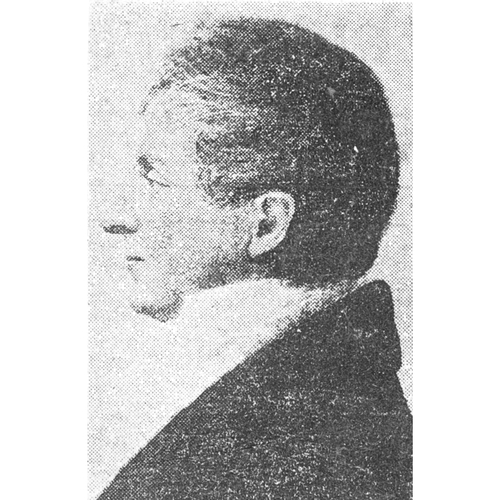
Source: Link
GILKISON, WILLIAM, ship’s captain and merchant; b. 9 March 1777 in Irvine, Scotland, son of David Gilkison and Mary Walker; m. 13 Jan. 1803 Isabella Grant, daughter of Commodore Alexander Grant*, and they had 11 sons; d. 23 April 1833 in Onondaga, Upper Canada.
Having received a liberal education, William Gilkison went to sea and served on a merchant vessel. The ship was captured by the French, and the young sailor was imprisoned for almost a year until he escaped on a second attempt. He emigrated to North America in 1796 and took command of a schooner owned by John Jacob Astor and employed in the service of the North West Company. The ship sailed Lake Erie between Fort Erie and Detroit. After his marriage Gilkison, according to the family historian, assisted his father in-law in the management of the Grant estate. By 1810 he was living at Elizabethtown (Brockville) and the following year moved to Prescott where he entered the forwarding business.
Prior to the outbreak of the War of 1812 Administrator Isaac Brock* drew up proposals for the defence of the province, one of which was to enquire “if he [Gilkison] will take a Naval Command.” Gilkison did so. In August 1813 he was sent from Prescott to Ogdensburg, N.Y., to gather political information. He was with Joseph Wanton Morrison at the battle of Crysler’s Farm on 11 November. Several days later he bore a flag of truce to the defeated American army.
After the war Gilkison returned to Scotland to provide for the education of his sons. His wife died in 1826, several of his elder sons went back to Upper Canada, and his cousin, John Galt*, became superintendent of the Canada Company which commenced its operations in 1827. Increasingly, it would seem, Gilkison thought of returning to the colony. Finally, in March 1832 he came back, accompanied by Galt. Some of his children had settled in the Brantford area. Gilkison purchased a farm west of the town on the Grand River for £500, naming it Oak Bank after his home in Glasgow.
On 4 Sept. 1832 he bought the southwest half of Nichol Township, approximately 13,816 acres, from Thomas Clark. By November a town site had been laid out which he named Elora. He began to make plans for this picturesque spot situated on the Grand River gorge, proposing mills and bridges as the basis for “a new City” and as a lure for future settlement, and journeying about the province to purchase supplies. In the spring of 1833 he stopped at the parsonage of Abram Nelles* where he was stricken with paralysis and died. Superintendence of the Elora project was carried on by his son David*, although William Gilkison’s first plan had been to make another son, Jasper Tough, the manager.
AO, ms 497. Brant County Museum (Brantford, Ont.), Gilkison papers, William Gilkison corr. PAC, MG 24, I25. St John’s (Sandwich) Anglican Church (Windsor, Ont.), Reg. of marriages, 13 Jan. 1803. UWOL, Regional Coll., William Gilkison papers, diary (transcript). J. R. Connon, “Elora” (n.p., 1930); repub. as The early history of Elora, Ontario, and vicinity, intro. Gerald Noonan (Waterloo, Ont., 1974). F. D. Reville, History of the county of Brant (2v., Brantford, 1920). Expositor (Brantford), 14 May 1948, 24 Jan. 1956. A. I. G. Gilkison, “Captain William Gilkison,” OH, 8 (1907): 147–48. R. E. Mills, “Elora,” Waterloo Hist. Soc., Annual report (Kitchener, Ont.), 1935: 164–68.
Cite This Article
D. E. Fitzpatrick, “GILKISON, WILLIAM,” in Dictionary of Canadian Biography, vol. 6, University of Toronto/Université Laval, 2003–, accessed April 24, 2025, https://www.biographi.ca/en/bio/gilkison_william_6E.html.
The citation above shows the format for footnotes and endnotes according to the Chicago manual of style (16th edition). Information to be used in other citation formats:
| Permalink: | https://www.biographi.ca/en/bio/gilkison_william_6E.html |
| Author of Article: | D. E. Fitzpatrick |
| Title of Article: | GILKISON, WILLIAM |
| Publication Name: | Dictionary of Canadian Biography, vol. 6 |
| Publisher: | University of Toronto/Université Laval |
| Year of revision: | 1987 |
| Access Date: | April 24, 2025 |



